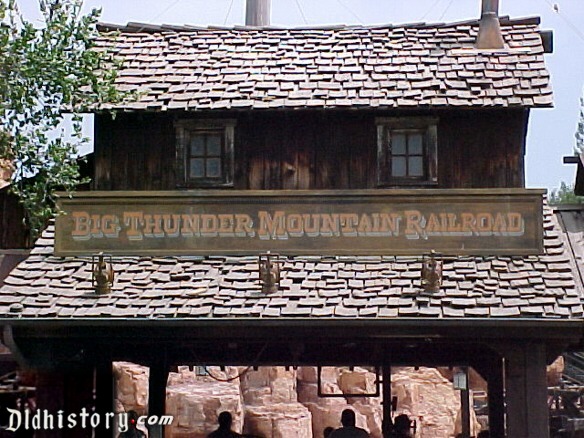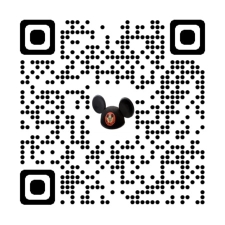Disneyland And Imagineering Part 10
ID:
TMS-3465
Source:
MickeyMousePark.com
Author:
K
Dateline:
Posted:
Status:
Current
"I know it's here somewhere"
I'm not sure if that's exactly what was said upon first sight of where the Rivers of America used to be, but I'm sure it was something similar. Maybe with a little more salt. A lot of the excavation for the layout of the park revolved around removing existing trees and vegetation, digging out what would be the basin for the riverbed that would become the Rivers of America. Being that this was farm land, the soil was rich and in many areas well cultivated. However, one thing that was overlooked was the absorption factor. During the excavation of the riverbed, over 55,000 cubic yards of soil was removed in preparation to shape the river layout. The riverbed was well graded, but at that point in construction, no lining had been put in place. As the river was being prepared for the opening, the waterway was filled, however because of the soft soil's absorbency, the water was drawn back into the soil and would have to be filled a second time. It's puzzling to see how this could have been overlooked; it could have been reasoned that with the ground graded and well packed, the soil wouldn't reabsorb the water to this degree. One thing was certain: without a river, one of the most iconic symbols of Disneyland that would make its home on the river would be absent. Considering how far Disney had come, this was a minor setback. The Imagineers had to come up with a way to line the river bed to prevent a repeat occurrence. What was discovered was that the soil would have to be mixed with a clay compound and that solved the problem. As the park evolved and grew, the river bed would eventually be lined with concrete. Completed, the Rivers of America measures 10,395,500 gallons in volume, covering some 8 acres.
Disney was very clear when instructing his Imagineers, that a riverboat would make its home on the Rivers of America and would be constructed to exacting historical specifications. A lot of decisions were actually compromises to meet the opening day deadline This wouldn't be one of them. To him this was more than just another attraction. The author, Samuel Clemens, had been an author he greatly admired as a boy. The impact of his writings stayed with him his entire life. It was, after all, part of his growing up in small town Marceline. So much so, that when it came to naming his dreamboat, it would bear his name -- or at least his pen name, Mark Twain.
Queen of the Delta Prepares to Set Sail
Walt Disney expected high quality standards in the design of his attractions, often setting the benchmark for other park developers to follow. The Mark Twain would be one of those attractions and join the Disneyland Railroad as another example of steam powered transportation. The primary reason for such strict design standards was because Disney wanted the Mark Twain to not be just another riverboat ride, but a real representation of a genuine Mississippi steam-powered paddle wheeler that was historically accurate. The majority of the riverboat was built in the Disneyland mills or the studio, while the job of creating the hull was assigned to Todd Shipyards in San Pedro, California and then moved in the middle of the night into the park.
Roger Broggie was just one of many Imagineers to work on the Mark Twain project. Richard "Dick" Bagley was responsible for creating the sketches of the riverboat's steam engines. Aside from working for the Disney Studios, he was another train aficionado as well as being the publisher of The Miniature Locomotive magazine. He was highly skilled at creating and maintaining live steam engines, initially for the Disney trains, but went on to adapt the technology to the engines for the Mark Twain. The paddle wheel assembly is a series of oak wood "spokes" or wheels. There are a total of five spokes attached equidistantly apart on a six inch diameter shaft. In addition, the paddles are cut from Douglas fir and fitted into slots, horizontally, onto the spokes. Forming the hull and deck planking is a very laborious task. It requires meticulous technique, seaming grooved fir with, caulk, yacht cotton thread, white lead, cotton duck, and marine glue in a slow, step-by-step process. For the metalworks, Disney followed the American Bureau of Shipping standards as a guide. Also on board was another Disney Studio artist, Roland Peterson, using The Little Rufus and an early version of The Natchez as models for the overall design. Upon completion, the Mark Twain would measure 105 feet long, weighing in at 150 tons. Some riverboats have an overall box like shape, but with the Twain it was felt that if the body was tilted slightly inward it would give it a more elegant look. It was a wise decision. If you look at some of the modern day paddle wheelers, they resemble a shoe box with a hull. It's interesting that boats of all types are historically referred to in the female gender. Nothing could be more true than with the Mark Twain. There truly is an innate beauty to her as you stand on the banks of the Rivers of America and watch the Twain as she approaches, turning gracefully; it's as if she paddled right out of the pages of Tom Sawyer.
Horsing Around in Frontierland
In the first year, Frontierland was every bit as real as the name implied. A great many concept sketches were done by Sam McKim for a large portion of both Frontierland and the Riverfront edge for the Rivers of America. McKim conceptualized storefront facades all down the Frontierland corridor including the Golden Horseshoe Revue and large area sketches as well. As you pass through the Fortress gateway, on your right was the Frontierland Trading Post and the Miniature Horse Corral. The corral was essentially a petting zoo comprised of small horses, ponies and donkeys. On the left side of the street was a large building shaped roughly like a half circle with a narrow extension close to the gateway and the straight edge forming the left side of the Frontierland corridor. At the end was the entrance for The Golden Horseshoe Revue, which faced the Rivers of America. As the corridor opened up, turning east, near where the Big Thunder Mountain Railroad is located, today, were the Stage Coach and Conestoga Wagons rides which opened in August of 1955. Beyond that were the Pack Mules which were one of the original opening day attractions. These were all the earliest examples of transportation and provided different trails to tour the "backwoods" of Frontierland. This area, including Tom Sawyer's Island, was undeveloped when the park opened, so there wasn't much too see. However, in all three cases, it did give riders a very authentic low-tech experience. Within one year, this area would see a two-million dollar expansion. Heading west at the corridor opening would lead to the Swift Plantation House, which was located at the approximate location of the Pirates of the Caribbean. Sponsored by Swifts's Premium Meats and famous for its fried chicken dinners, after the Plantation House closed in 1962, and the Blue Bayou Restaurant opened in 1967, the mansion façade inside bears a resemblance to its predecessor. Beyond that was the Frontierland Train Station and at the far west end of the path, the Friendly Indian Village complete with different Indian dwellings including several teepees. Over the years there were several different tribes that contributed some of the most authentic customs in the history of the park. These included representatives from the Apache, Comanche, Navajo, and Pawnee tribes. On the river's edge, across from the Frontierland Station, was Fowler's Harbor or Fowler's Landing as it was sometimes referred to. Although it wasn't officially christened until 1958, it was a nod to Admiral Joseph Fowler (ret.), who, in addition to overseeing the overall construction of the entire park, made specific contributions to the Twain and the Rivers of America. He created and supervised the clay lining for the riverbed and was responsible for maintaining the subsequent water level after the first mishap. Prior to the park being opened and the construction of the Twain, the area was called "Joe's Ditch," by Disney. That name came about because that area was used as a "staging area" as the surrounding area was being shaped. However, it became of even greater use over the years, first as a general construction area, then the servicing dock for the Twain and, upon completion, it was used as berthing dock for the Columbia when it debuted in 1958.
Disney's Twin Rivers
Since we're exploring a section of the park that doesn't just primarily involve land, there's one of the more interesting aspects that's often overlooked. To supply the park with water to give it it's unique look, it uses two separate water systems. They are both independent of each other and are considered strictly for aesthetics. The larger body of water or dark water system supplies primary areas such as the Jungle Cruise, Rivers of America, Storybook Land Canal Boats, Sleeping Beauty's Castle Moat, and the Lagoon used in the area of the retired Motor Boat Cruise, near Tomorrowland Autopia. This "Big River" as it is sometimes referred to is actually a supply line that encompasses the entire park whether visible or underground. The water is tinted with dye to give it it's color. The primary reason for this is to conceal the tracks and mechanics for various attractions and shows. Tinting the water does serve a practical purpose as well as providing an aesthetic look. Although the water is not toxic, it takes approximately 12 pounds of a mixture of brown and green dye and several days to give the Big River its' specific tint. The park gets its water supply from a well 137 feet below ground. Named Disneyland's Well #1, it is located behind the park berm close to Big Thunder Ranch. Close to the Pack Mule trail, concealed in rock work, is the Big River 25, referring to its' horsepower. It is the main circulating pump for the park. For those who remember the large bull moose that stood at the West end of the Rivers of America in the early years, this is the starting point for the Big River system as well as the low point by some fifteen feet. Consequently, two million gallons of water are drawn daily into a 21 inch pipe approximately 100 feet in front of where the moose stands, and travels east around the back part of the park near where Thunder Ranch was located. To navigate the Twain, there is a narrow operating range on the river. The deepest location is measured at 5' 5". Because of the mechanics involved in the tracking that guides the riverboat, should inclement weather cause the river to rise above 5'10", the Twain would not be able to operate. Leaving Frontierland, the supply line continues into Fantasyland behind Storybook Land Canals as well as into the attraction itself, which is the highest point for the entire Big River supply line. Located here is one of many diverters and weirs that can control the amount of water that can divert, bypass, or fill separate areas and attractions. While the diverter controls the direction, the weir controls the level of the water. The supply line empties into the Tomorrowland Boat Lagoon, but drops underground through Fantasyland and resurfaces around Sleeping Beauty's Castle. On the East side of the castle the river continues under a small arched walkway, following along the perimeter gateway of both Frontierland and Adventureland. The Big River weaves through Adventureland to supply the Jungle Cruise, narrowing out of the attraction past the Swift Plantation House converting back to a 37 foot diameter pipe before finally flowing back into the Rivers of America.
In addition to the dark water supply line that encircles the park, there is the clear water closed system. It creates a pool of water totaling 7,581,500 gallons for specific rides and is not integrated with the larger dark water line. Some of the best examples of this are the Matterhorn, It's a Small World, Pirates of the Caribbean, and the Submarine Voyage lagoon. Like the Rivers of America, the clear system gives a unique look; the closed system provides very important detail to each attraction. Consider the Matterhorn, a scaled version with attention to the actual shape of the original. To give the ride more texture, the introduction of waterfalls was conceptualized. Also to note, that at the conclusion of the ride, the water serves a practical purpose as it is used as a secondary braking system for the toboggans. Now, try to imagine the attraction with the dark green water of the Big River, compared to the crystal clear waterfalls that were added. It is a matter of what fits best in each specific environment. Another scene where clarity is more effective artistically is in the Underground Grotto in the first section of the Pirates of the Caribbean attraction. Illuminated pools in the underground caverns are formed from waterfalls that pour out of the rock face all around the ride layout. Weaving around through the claustrophobic scenes creates a beautiful, but eerie, atmosphere. The Pirates and Small World attractions both use clear water in their ride systems. Because the boats or bateaux are moved differently than the Mark Twain, and because there is less to conceal, this water system was deemed more suitable. Each attraction utilizing the clear water system has a supply line and a number of controls which, like the big river, are constantly monitored. In the peak summer season, 30,000 gallons of water can be lost daily, simply from evaporation.
If you look at Disneyland like a standard business model with a groundbreaking, construction period, and completion, that is where Disneyland takes a sharp turn. It never had or probably never will have a completion date, which is no secret. Walt Disney always said, "Disneyland will never be completed."
This concludes the first half of the Imagineering Disneyland series. In the second half, we will see what happened when the gates opened, how Disney and the Imagineers dealt with the unexpected, and what they had in store beyond Opening Day.
Attractions Referenced In This Article:
Restaurants Referenced In This Article:
Lands Referenced In This Article:






